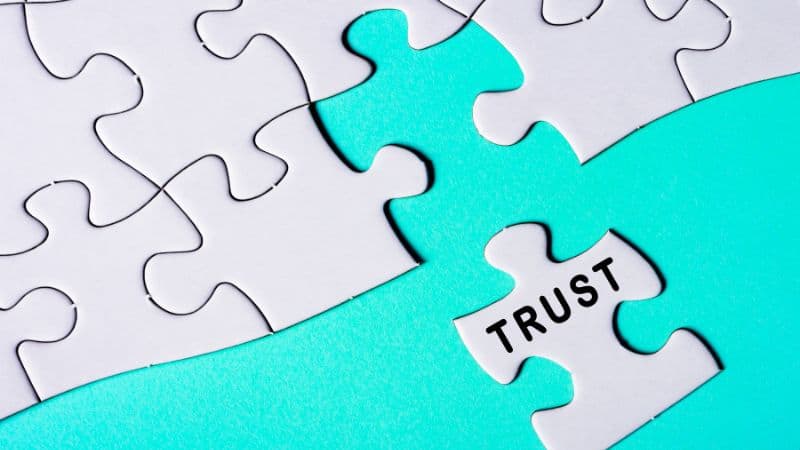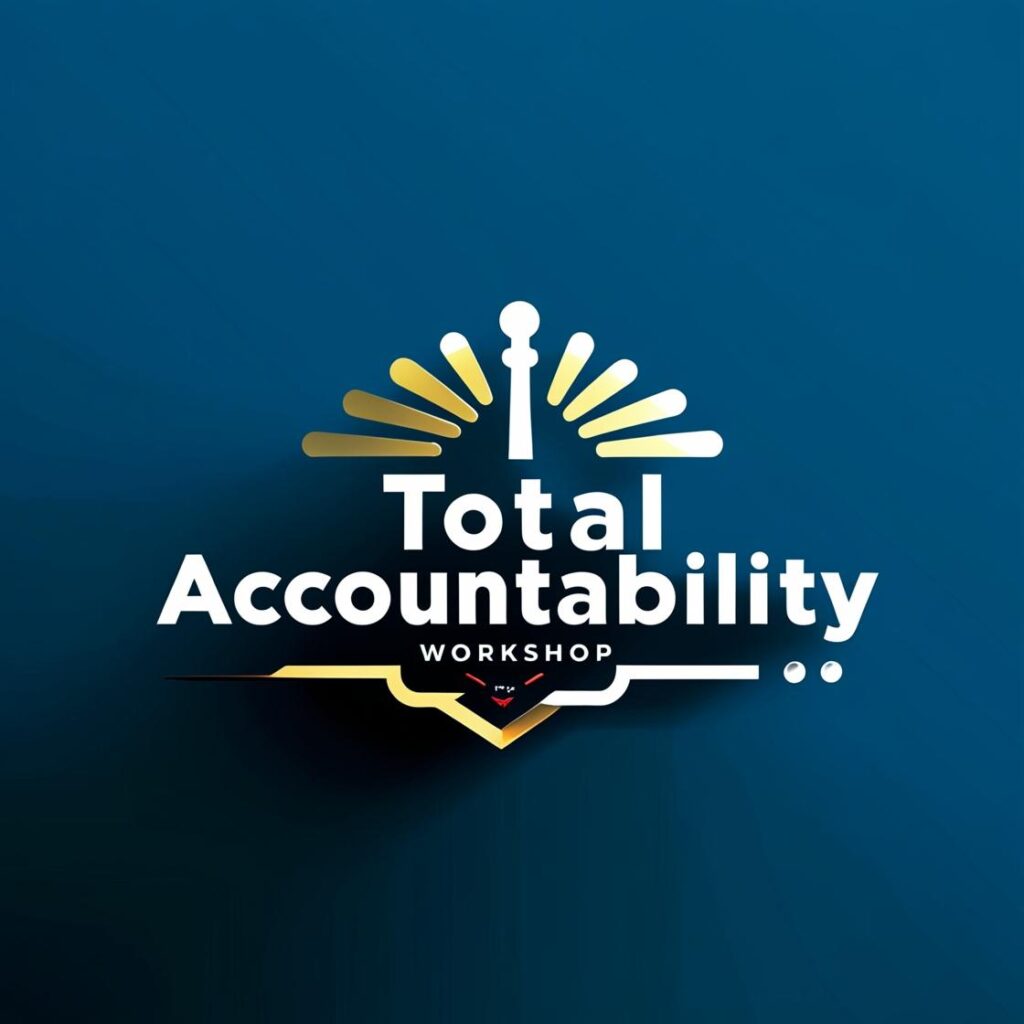Are you looking for team-building activities that build trust? It is best to look for games that will bring out the best in people. To build trust, you must be able to show the competence of team leaders, that members care for each other, and that they are consistent and fair.
It is not enough that the games are fun. Team-building activities that build trust provide team members that opportunities to respect and honor each other.
When it comes to building a strong and successful team, trust is key. Trust between team members allows for open communication, collaboration, and a shared sense of purpose.
But building trust can be easier said than done. It takes time, effort, and a willingness to be vulnerable.
🎯 Your team is already good—now it’s time to make them great. Our team-building workshops offer practical skills and authentic connections, so every member feels like they belong. Let’s build something amazing.
Activities May Help Build Trust
Let’s imagine a workplace where a team struggles with communication and collaboration. Despite being talented and skilled, the team members must work together effectively, resulting in missed deadlines and frustrated clients.
The team leader recognizes the issue and brings the team together for a series of activities focused on building trust.
When I was a teacher, our school brought us to a team building in Cavite. He used the following activities.
First is the Blindfolded Obstacle Course.
In this activity, team members must guide a blindfolded team member through an obstacle course. The blindfolded team member must trust their team members to guide them safely through the course. This activity promotes communication and trust and highlights the importance of relying on others. When I was in high school, we had Blind Walk.
Another activity is the Circle of Trust. Team members stand in a circle and take turns falling backward, trusting that their team members will catch them. This activity builds trust and promotes collaboration by allowing team members to rely on each other for support. This is another version of Trust Fall.
The third activity is Truth Circle. In this activity, team members sit in a circle and take turns sharing a personal story or experience. The rest of the team must listen without judgment and offer support and feedback. This activity builds trust by creating a safe and supportive space for team members to share personal information. We made a bonfire. So, we didn’t really have to show our faces while sharing.
You don’t need to have all of these activities. Sometimes, you only need one to jumpstart a conversation to help your team open up.
Except for the Truth Circle, I don’t often use the first two in facilitating team building.
Games do not build trust. Therefore, you must be intentional. Pick the right games, and use them to clear the cobwebs that prevent team members from trusting each other more.
We use games to stimulate courageous conversations. And what we want at the end of each conversation is a mutual agreement on what the team will do moving forward.
I will share with you the most common team-building games used to build trust. If you are an accidental team-building facilitator, you can use some of these.
Frankly, many younger participants may not like these activities as they want more physical games. But since many of these activities can be done in less than 30 minutes, you can inject them into a day of team building.
I don’t use some of these in my team-building activities. But I still find some of them useful as icebreakers in leadership seminars. I choose these activities because they don’t need lengthy instructions. So, even new facilitators can use them.

Team Building Activities That Build Trust
So, here are 25 activities you can use to jumpstart your trust conversations.
Great leadership isn’t an event—it’s a habit. Get actionable leadership habits every Monday and Thursday.
Word Up
In Word Up, each team member introduces themselves with just one word that describes them. The team must then form a story using all the words. Each person can only add one sentence to the story, and they must use the word that was used to describe them in their sentence.
Word Up encourages team members to communicate and connect with one another and helps break the ice and create a relaxed atmosphere. By working together to form a story, the team learns to listen to each other and build on each other’s ideas.
Word Up can be completed in 15-20 minutes.
One Vision
In One Vision, the team works together to create a mission statement that reflects their shared goals and values. Each person writes down their ideas on a piece of paper, and then the team works together to combine them into a single statement.
By creating a mission statement, the team gains a shared understanding of its goals and values. This helps build a sense of unity and purpose within the team and provides a guiding principle for decision-making and problem-solving.
This activity can take 30 minutes to an hour, depending on the complexity of the mission statement.
Trust Fall
I am not a fan of trust fall. But this is a go-to activity of many accidental team building facilitators. So, allow me to share this with you.
In Trust Fall, team members pair up and take turns falling backward into their partner’s arms. The person falling must trust that their partner will catch them, while the person catching must demonstrate their commitment to their partner’s safety.
But be careful, people do not have the same strengths and sizes. Trust falls may cause injuries – and mistrust.
Trust exercises help team members build trust and demonstrate their commitment. This activity also requires clear communication and active listening, as the catcher needs to be ready to catch their partner at the right moment. (But then choose other activities that build trust.)
This activity can be completed in 15-20 minutes.
Power Profiling
In Power Profiling, each team member takes turns discussing their strengths and weaknesses. The team then works together to identify how each person’s strengths can be leveraged to overcome weaknesses.
Understanding each team member’s strengths and weaknesses is essential for building a strong team. This activity helps to build trust and encourages team members to work together to achieve their goals.
Power Profiling can take 30 minutes to an hour, depending on the team size.
(I got the title Power Profiling here. It does the same thing, right?)
Quest Quest
In Quest Quest, the team is divided into smaller groups, and each group is given a list of items to find or tasks to complete. The first group to complete all the items or tasks wins.
Quest Quest encourages teamwork and problem-solving skills. This activity also requires clear communication and planning, as each group needs to work together to complete the tasks.
This activity can take 1-2 hours, depending on the complexity of the items or tasks.
The Blind Lead
In Blind Lead, team members are paired up, and one person is blindfolded while the other person guides them through an obstacle course. The blindfolded person must trust their partner’s instructions to navigate the course successfully.
Blindfolded obstacle courses require trust, communication, and teamwork. This activity also helps to build problem-solving skills and encourages team members to rely on each other.
This activity can be completed in 15-20 minutes.
Brainstorm Bash
In Brainstorm Bash, the team works to solve a specific problem or challenge. Each person is encouraged to share their ideas, and the team collaborates to develop a solution.
Problem-solving exercises challenge teams to work together to solve problems and develop critical thinking skills. This activity also encourages creativity and innovation.
This activity can take anywhere from 30 minutes to an hour, depending on the complexity of the problem.
Friendly Feud
In this activity, the team is divided into two or more groups, and each group must come up with answers to trivia questions related to their work or industry. The team with the correct answers wins.
Team-building games like Friendly Feud can improve communication skills and encourage healthy competition among team members. This activity also allows team members to learn from each other.
This activity can take 30-60 minutes, depending on the number of questions.
Speak Up
In Speak Up, team members take turns providing feedback to each other on their strengths and areas for improvement. Each person should be encouraged to share their thoughts openly and honestly.
Feedback sessions allow team members to learn from each other and improve their skills. This activity also helps to build trust and encourages open communication.
This activity can take anywhere from 30 minutes to an hour, depending on the team size.
Acting Out
In Acting Out, team members take on different roles and act out various scenarios related to their work. This can include customer interactions, sales pitches, or team meetings.
Role-playing exercises, like Acting Out, can help to improve communication skills, build confidence, and encourage creative thinking. This activity also allows team members to practice different scenarios and learn from each other.
Acting Out can take 30-60 minutes, depending on the number of scenarios.
Roundtable Talk
In Roundatable Talk, the team discusses a specific topic related to their work or industry. Everyone should be encouraged to share their thoughts and ideas openly and respectfully.
Group discussions can help build trust, encourage open communication, and allow team members to learn from each other. This activity also promotes critical thinking and problem-solving skills.
Roundtable Talk can take anywhere from 30 minutes to an hour, depending on the complexity of the topic.
Idea Inc.
In Idea Inc, the team brainstorms new ideas or solutions related to their work or industry. Each person should be encouraged to share their thoughts openly and without judgment.
Brainstorming sessions can help promote creativity and innovation, build trust, and encourage open communication among team members. This activity also allows team members to learn from each other and collaborate on new ideas.
Idea Inc can take 30 minutes to an hour, depending on the number of ideas generated.
Practice Makes Perfect
In Practice Makes Perfect, the team conducts mock meetings to practice communication and presentation skills. Everyone should be encouraged to take on different roles, such as presenter, moderator, or note-taker.
Mock meetings can help to build confidence, improve communication skills, and encourage teamwork. This activity also allows team members to learn from each other and practice different scenarios.
This activity can take anywhere from 30 minutes to an hour, depending on the complexity of the meeting.
Escape Room
In Escape Room, the team is locked in a room and must work together to solve a series of puzzles and riddles to escape within a set amount of time.
Escape rooms can help to improve problem-solving skills, build teamwork, and promote creativity. This activity also allows team members to learn from each other and develop their communication and collaboration skills.
This activity can take anywhere from 60-90 minutes, depending on the difficulty level of the escape room.
Lego Build
In Lego Build, the team is given a set of Lego blocks and must work together to build a structure or object within a set amount of time.
Lego Build can help improve communication and collaboration skills and promote creativity and problem-solving. This activity also allows team members to learn from each other and develop their leadership and teamwork skills.
This activity can take anywhere from 30-60 minutes, depending on the complexity of the build.
Human Knot
In Human Knot, team members stand in a circle and hold hands with two people who are not beside them. The team must then work together to untangle the knot without letting go of each other’s hands.
Human Knot can help to improve communication skills, build teamwork, and promote problem-solving. This activity also allows team members to learn from each other and develop their trust and collaboration skills.
This activity can take anywhere from 15-30 minutes, depending on the team size.
Blind Drawing
In Blind Drawing, team members are paired up, and one person is blindfolded. The other person must describe an object, and the blindfolded person must draw it without seeing it.
Blind Drawing can help to improve communication skills, build trust, and promote creativity. This activity also allows team members to learn from each other and develop their communication and collaboration skills.
This activity can take anywhere from 15-30 minutes, depending on the complexity of the object.
Paper Tower
In this activity, team members are given limited time and resources to build the tallest tower possible using only paper and tape.
Paper Tower can help to improve problem-solving skills, build teamwork, and promote creativity. This activity also allows team members to learn from each other and develop their leadership and teamwork skills.
This activity can take anywhere from 30-60 minutes, depending on the complexity of the tower.
Jigsaw Puzzle
In Jigsaw Puzzle, the team is given a jigsaw puzzle to complete within a set amount of time.
Jigsaw Puzzle can help to improve problem-solving skills, build teamwork, and promote collaboration. This activity also allows team members to learn from each other and develop their communication and problem-solving skills.
This activity can take anywhere from 30-60 minutes, depending on the puzzle’s difficulty level.
Minefield
Instruction: In this activity, team members must navigate a “minefield” of obstacles (such as cones, chairs, or other objects) while blindfolded. The rest of the team gives directions to the blindfolded person to guide them through the minefield.
Why it works: Minefield can help to improve communication skills, build trust, and promote teamwork. This activity also allows team members to learn from each other and develop their communication and collaboration skills.
Duration: This activity can take anywhere from 15-30 minutes, depending on the team size.
Word Association
Instruction: In this activity, the team sits in a circle, and someone starts by saying a word. The next person must say a word that is associated with the first word, and so on, around the circle.
Why it works: Word Association can help to improve communication skills, build teamwork, and promote creativity. This activity also allows team members to learn from each other and develop their communication and collaboration skills.
Duration: This activity can take anywhere from 15-30 minutes, depending on the team size.
Scavenger Hunt
Instruction: In this activity, the team is given a list of items or tasks to complete, and must work together to find or complete them within a set amount of time.
Why it works: Scavenger Hunts can help to improve problem-solving skills, build teamwork, and promote creativity. This activity also allows team members to learn from each other and develop their leadership and teamwork skills.
Duration: This activity can take anywhere from 60-90 minutes, depending on the complexity of the tasks.
Balloon Tower
Instruction: In this activity, team members are given limited time and resources to build the tallest tower possible using only balloons and tape.
Why it works: Balloon Tower can help to improve problem-solving skills, build teamwork, and promote creativity. This activity also allows team members to learn from each other and develop their leadership and teamwork skills.
Duration: This activity can take anywhere from 30-60 minutes, depending on the complexity of the tower.
Memory Game
Instruction: In this activity, the team is shown a series of objects or images for a limited amount of time and must work together to remember as many details as possible.
Why it works: Memory Game can help to improve memory and recall skills, build teamwork, and promote collaboration. This activity also allows team members to learn from each other and develop communication and problem-solving skills.
Duration: This activity can take 15-30 minutes, depending on the complexity of the objects or images.
Tug-of-War
Instruction: In this activity, the team is divided into two groups and competes in a game of Tug-of-War.
Why it works: Tug-of-War can help to improve teamwork, build trust, and promote collaboration. This activity also allows team members to learn from each other and develop their leadership and teamwork skills.
Duration: This activity can take anywhere from 15-30 minutes, depending on the size of the teams.

Choose your trust-building activities.
Choosing the right trust-building activities can make a significant difference in the effectiveness of a team or group.
Here are some tips to help you select the best activities for your team.
Identify Your Goal
Trust-building activities can have different focuses, such as enhancing communication, resolving conflicts, or fostering mutual understanding.
Identify your main objective so you can select the activities that best suit your needs.
Know Your Team
It’s crucial to understand the dynamics of your team.
- Are there cultural, gender, age, or personality differences that need to be considered?
- Does the team prefer physical activities or intellectual challenges?
- Are there existing trust issues in your team? How impactful are these issues?
Choose activities that will engage everyone and make them feel comfortable.
Mix it Up
Variety is key to keeping people engaged. This could mean changing the types of activities, the location, or the format.
Ensure the activities don’t become predictable and keep them challenging and fresh.
Customize your team-building activities. In the Philippines, it is typically for event organizers to send you packages. Often, their focus is on accommodation (for that which they earn the most) and less on team-building activities.
They will ask you to select the number of games. But without careful consideration, some games may bring intense competition which often results in cheating, and make team members affirm the reasons for their mistrust of each other.
Challenge Comfort Zones
Trust-building activities are meant to push people out of their comfort zones in a safe and supportive environment. This can help team members grow individually and as a team.
This does not mean that you keep having Trust Fall and similar activities. Trust Fall activity does not build trust. Its origin is from those who used it to help you face your fears, not build your trust. Unfortunately, it does not make you fearless, nor it makes you trust others.
Consider Professional Facilitation
If you’re dealing with complex issues or a large group, it might be helpful to bring in a professional facilitator who can guide the activities and help resolve any issues that arise.
It is the most practical step you can make.
For example, I have facilitated team-building programs for 800 people. There was a time I had to do 300 people each day for more than a month. We design each team building so that we get the best results. Experience helps us ensure that everything is safe, friendly, and organized.
Ensure Relevance
The activities you choose should be relevant to the work or relationship of your team. This will help people understand how the skills they are developing can be applied to real-world situations.
You may play some silly games, like Minute-to-Win-It games. But make it relevant.
You can play the Spider Web but ensures that it is relevant. One way to make it relevant is to look into how you will debrief the games. Whatever you want people to realize, the games will bring out. If not, change the mechanics of the game. If that will not do, then change the game.
Feedback and Reflection
After each activity, provide a platform for team members to share their thoughts, experiences, and suggestions.
This can help the team reflect on the experience and understand the importance of trust in their working relationships.
A Call to Commitment and Action
It says to begin with the end in mind. Commitment and action are the beginning of the end. My end in mind is what they do when they get back to work. But if you won’t have commitment and action at the end of the activity, it is unlikely that they will commit themselves to a new mindset and behaviors.
It is very unlikely that you’ll meet your goal.
This is why you want them to reflect on their experience.
Debriefing of each session will build up this commitment.
So, the next time you hire a team building facilitator, or do it yourself, ensure that you begin with the end in mind.
Conclusion
These 25 team-building activities can help you build trust. Moreover, you can run them even without the need for team-building facilitators.
Our activities are often tailor-fit to the needs of our client organizations. We write the mechanics to serve as metaphors for real-world experiences.
When you need help in designing and facilitating your team building, contact us. We design result-oriented team building workshops.



